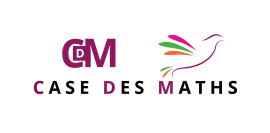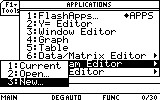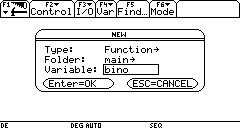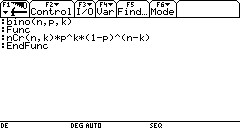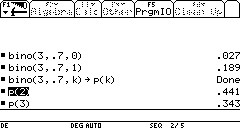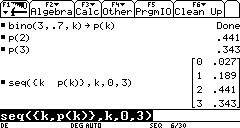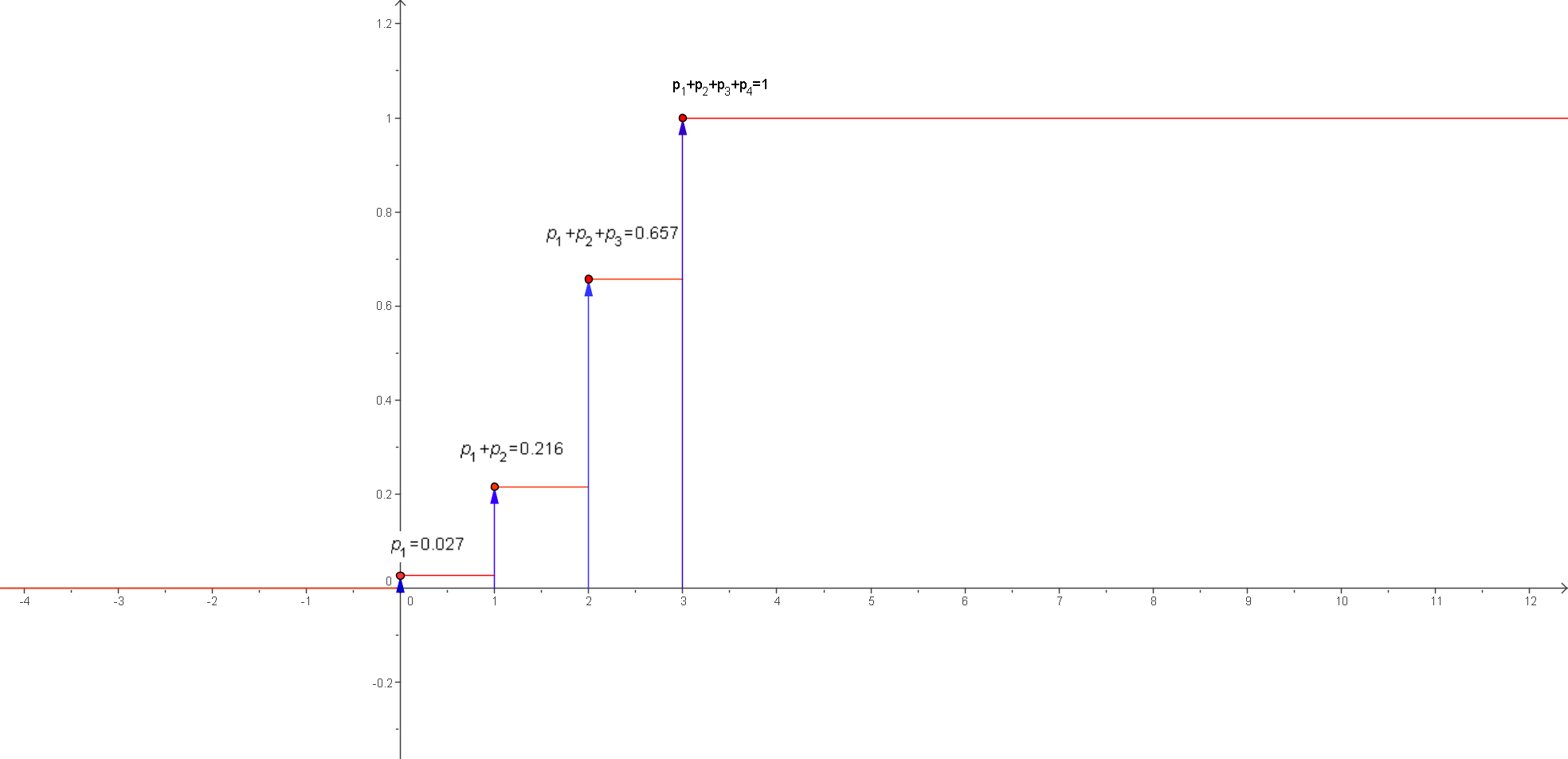Probabilités : loi binomiale des exercices avec corrigé
Page 1 sur 2
Quelques exercices pour s'entraîner…
Exercice 1 ![]()
Enoncé  A chaque tir la probabilité pour qu'un tireur touche la cible est 0,7. Il tire 3 fois de suite. La variable aléatoire $X$ est définie par le nombre de coups dans la cible.
A chaque tir la probabilité pour qu'un tireur touche la cible est 0,7. Il tire 3 fois de suite. La variable aléatoire $X$ est définie par le nombre de coups dans la cible.
Loi de probabilité de $X $?
Fonction de répartition ?
$E(X) , V(X)$ ?
 A chaque tir la probabilité pour qu'un tireur touche la cible est 0,7. Il tire 3 fois de suite. La variable aléatoire $X$ est définie par le nombre de coups dans la cible.
A chaque tir la probabilité pour qu'un tireur touche la cible est 0,7. Il tire 3 fois de suite. La variable aléatoire $X$ est définie par le nombre de coups dans la cible. Loi de probabilité de $X $?
Fonction de répartition ?
$E(X) , V(X)$ ?
Exercice 2 
Enoncé 

- Un tireur vise une cible avec une chance sur deux de la toucher. Combien doit-il tirer de coups afin que la cible soit atteinte avec une probabilité supérieure ou égale à 0,95 ?
- Même question lorsque le tireur a une chance sur trois de toucher la cible.
Exercice 3 
Enoncé  Une fabrication automatique de pièces embouties donne un pourcentage de rebuts s'élevant à 5%. On considère un échantillon de 10 pièces issues de cette fabrication. Calculer la probabilité de trouver dans cet échantillon au plus 2 rebuts.
Une fabrication automatique de pièces embouties donne un pourcentage de rebuts s'élevant à 5%. On considère un échantillon de 10 pièces issues de cette fabrication. Calculer la probabilité de trouver dans cet échantillon au plus 2 rebuts.
 Une fabrication automatique de pièces embouties donne un pourcentage de rebuts s'élevant à 5%. On considère un échantillon de 10 pièces issues de cette fabrication. Calculer la probabilité de trouver dans cet échantillon au plus 2 rebuts.
Une fabrication automatique de pièces embouties donne un pourcentage de rebuts s'élevant à 5%. On considère un échantillon de 10 pièces issues de cette fabrication. Calculer la probabilité de trouver dans cet échantillon au plus 2 rebuts.Exercice 4 
Enoncé  Combien de fois faut-il lancer un dé pour faire au moins un six avec une probabilité supérieure ou égale à 0,95 ?
Combien de fois faut-il lancer un dé pour faire au moins un six avec une probabilité supérieure ou égale à 0,95 ?
 Combien de fois faut-il lancer un dé pour faire au moins un six avec une probabilité supérieure ou égale à 0,95 ?
Combien de fois faut-il lancer un dé pour faire au moins un six avec une probabilité supérieure ou égale à 0,95 ?Exercice 5 
Enoncé  On lance 2 dés puis on totalise les points marqués. Au bout de 20 lancers quelle est la probabilité d'avoir obtenu 10 fois un total supérieur ou égal à 8 ?
On lance 2 dés puis on totalise les points marqués. Au bout de 20 lancers quelle est la probabilité d'avoir obtenu 10 fois un total supérieur ou égal à 8 ?
 On lance 2 dés puis on totalise les points marqués. Au bout de 20 lancers quelle est la probabilité d'avoir obtenu 10 fois un total supérieur ou égal à 8 ?
On lance 2 dés puis on totalise les points marqués. Au bout de 20 lancers quelle est la probabilité d'avoir obtenu 10 fois un total supérieur ou égal à 8 ?
Page
- Vues: 19866
